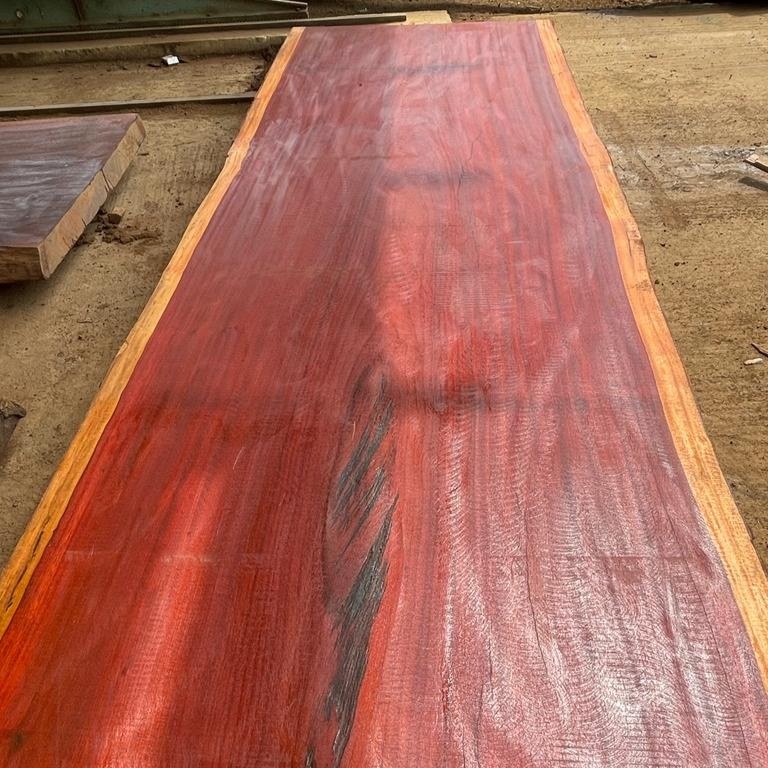 Image 1 of
Image 1 of


Padouk Slabs
Other names: Vermillion
Resistance to fungi: ★★★★
Resistance to dry wood borers: ★★★★
Resistance to termites: ★★★★
Impregnability: ★★★
Stability: ★★★★
*on a 4-star system
Uses: Veneer, Furniture, Flooring, Musical Instruments, Tool Handles
Other names: Vermillion
Resistance to fungi: ★★★★
Resistance to dry wood borers: ★★★★
Resistance to termites: ★★★★
Impregnability: ★★★
Stability: ★★★★
*on a 4-star system
Uses: Veneer, Furniture, Flooring, Musical Instruments, Tool Handles
Other names: Vermillion
Resistance to fungi: ★★★★
Resistance to dry wood borers: ★★★★
Resistance to termites: ★★★★
Impregnability: ★★★
Stability: ★★★★
*on a 4-star system
Uses: Veneer, Furniture, Flooring, Musical Instruments, Tool Handles
Padouk:
Padouk is a type of hardwood with the scientific name Pterocarpus soyauxii.
It is native to tropical regions of Africa and Asia, including countries such as Cameroon, Congo, Ghana, Nigeria, and Tanzania, as well as India and Southeast Asia. The wood is known for its striking reddish-orange color, which can range from a bright orange-red to a deeper red-brown. The color of Padouk wood deepens over time, becoming richer and more vibrant.
Padouk is valued for its durability, strength, and resistance to decay and insects. It has a Janka Hardness Rating of 1,825, which is higher than many other hardwoods like oak and maple.
It's a great choice for applications where strength and durability are important, such as flooring, decking, and outdoor furniture.
Padouk wood is also relatively easy to work with, despite its hardness, making it a popular choice for woodworking projects.
In addition to its physical properties, Padouk is also prized for its aesthetic qualities. Its distinctive color and grain pattern make it a popular choice for furniture, decorative items, and musical instruments.
Many woodworkers like the way that Padouk can be used to create a striking contrast with other wood species or materials.
While it’s known for its bright color, it is important to note that prolonged exposure to sunlight can cause it to fade over time.
Some woodworkers choose to apply a finish or sealer to Padouk wood to protect it from UV damage and preserve its color.
Other names for Padouk:
- African Padauk: This name reflects the wood’s African origins and is sometimes used to distinguish it from other species of Padouk that are found in Asia.
- Camwood: This name is derived from the wood’s historical use in making dye, particularly in West Africa, where it was used to produce a bright red dye for textiles and other materials. - Barwood: This name is sometimes used to refer to Padouk wood that has been cut into lumber or planks for use in woodworking projects.
- Corail: This name is used in parts of West Africa, particularly in the Ivory Coast, to refer to the wood’s distinctive reddish-orange color, which is similar to the color of coral.
- Vermillion: This name is sometimes used to describe the wood’s bright reddish-orange color, which is reminiscent of the pigment known as vermillion or cinnabar.

